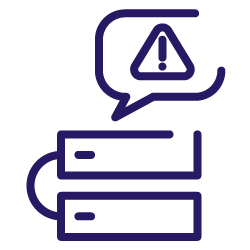HTTP (HyperText Transfer Protocol) or response status codes refer to requests to a web server made by search engines or visitors on a website.
These codes are always represented by three numbers beginning with 1,2,3,4 or 5 and it indicates the status of a web element.
From 100s to 500s, status codes are split into the following categories:
- 100s – Informational: The request has been received and the process is going on.
- 200s – Success: The request has been received and works well.
- 300s – Redirection: The request has been received but needs a extra step to be completed.
- 400s – Client error: The request has been asked by a client but the destination page is not correct.
- 500s – Server error: The request asked by the client was correct but the server failed to deliver it.
Even if a lot of different HTTP status codes can occur, not all of them will have a negative impact on your SEO.

Which HTTP status codes should you keep in mind regarding your SEO?
200 OK
The request has been successful, which means everything is normal.
301 Moved permanently
The requested page has been assigned a new permanent URL, so it means any reference to this source should use a returned URL. This redirection is used when an URL needs to redirect to another.
302 Found
This status code means that the server is responding to a request with a page from a different location while the requester keeps using the original location for future requests.
Overall, this process is not optimal because it doesn’t accurately inform search engines that a page has changed location. In fact, using this status code obliges search engines to use the redirect as a temporary solution without the benefit of passing along any link equity.
404 File not found or page not found
This status indicates that the server has not found anything related to the requested URL, which can be permanent or temporary. In most cases, a 404 error message is displayed by webmasters.
410 Gone
As a permanent condition, the URL requested is not available anymore and no forwarding address is known.
503 Service unavailable
The request asked cannot be realized because of server issues due to overloading or a site being under maintenance. This status code should be used whenever the server is out of use for a temporary period.
Also, this status code tells search engines to come back later because the page is just out of use for a short amount of time.


[…] and creative and engage with your audience in a more positive way. In fact, 404 page is a status code response in HTTP meaning the user has clicked on a broken link. While those pages can frustrate […]
[…] code errors like 4XX and 5XX that can badly impact your SEO. Understanding the different HTTP status code can help you rank […]